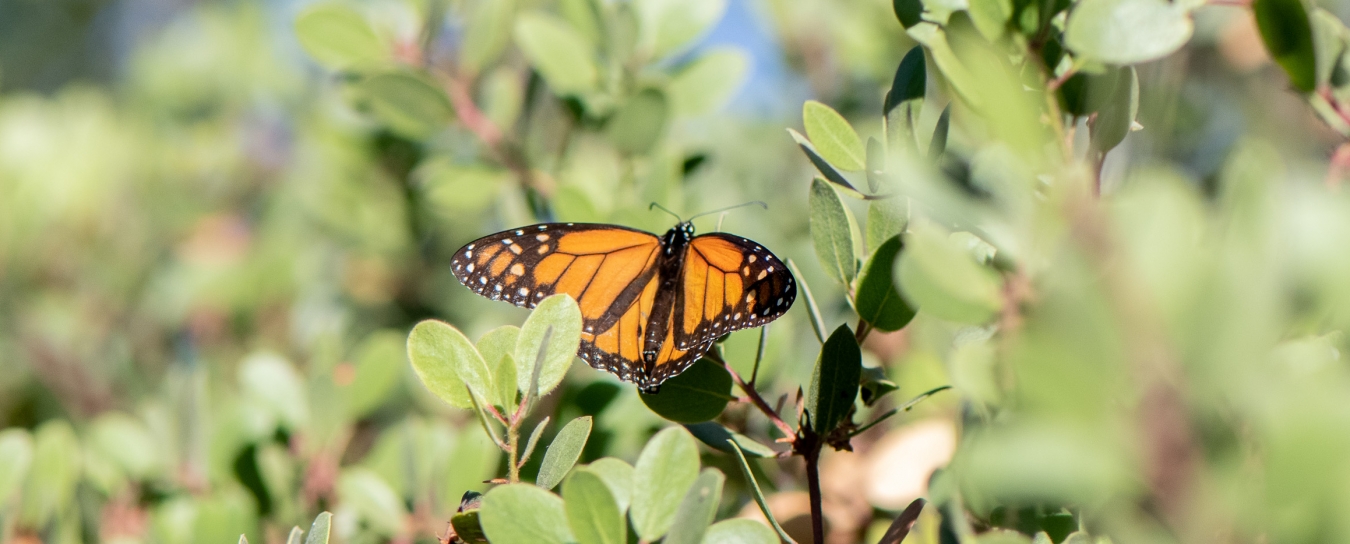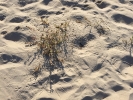
Invertebrates
See our handy guide to critters found in local homes and our Central Coast Butterfly FAQ. Browse the insects and other terrestrial arthropods we’ve identified. Check out local marine invertebrates, particularly bivalve mollusks and intertidal organisms.
- Anthropology
- Rocks & Fossils
- Invertebrates
- Vertebrates
- Botany
- Astronomy
- Fungi
- General
- Recently Asked
Tracks on beach
Hi! Would anyone there know what makes the tracks in this (attached) photo? They are all over Hollywood Beach in Oxnard, usually around vegetation but not always. They appear to be something that lives in the sand, as they do not seem to connect to anything or travel away from where the tracks are located.
Thank you for any help or guidance.

Curator Response
Hi Gene,
Based on geography, the habitat, as well as the shape and size of these tracks, they were probably created by the adults of a darkling beetle (family Tenebrionidae) called the dune beetle (genus Coelus); we have a couple of different species that occur along Southern California beaches. Your supposition that they belong to something living in the sand is right; in fact, they aren’t so much tracks in the sand as traces left behind from burrowing beneath the surface. These chunky, convex beetles, seen here, are well-adapted to life in dry sand. Their long setae (hairs) are effective at preventing sand grains from sticking to the body, while their smooth, compact body shape allows them to easily push through sand. They make their burrows just under the surface of the sand, and since the sand is dry and loose, the middle portion of the burrow collapses almost immediately as the beetle scoots along, producing a track that is V-shaped in profile. One trick for uncovering them: take an old metal kitchen sifter to the beach and use it to scoop up the dry layer of sand around some fresh-looking burrows down to a couple centimeters and gently shake the sand through the mesh. If you're lucky you might come up with a beetle or two.
The plant, which appears to be Sea Rocket (Cakile maritima), is probably a steady food source for these subsurface dwellers, which, like a majority of darkling beetles, feed on dry, decaying plant parts that have fallen to the ground. In the photo you provided, I would guess there are many individuals that have concentrated around this one plant, acting as a sort of subterranean beach-plant-waste cleanup crew!
Thanks for sharing!
Stay curious,
Schlinger Chair and Curator of Entomology Matthew L. Gimmel, Ph.D.

